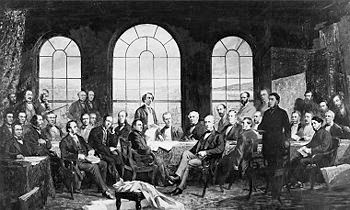James Taylor: Mexico
You get a mental picture of someone drinking and baking their brains out on the beach in Mexico. Then it's night and you're doing something with a coked up senorita. She's sleepy but her eyes are on fire. It's all right so far. The moon is high in the sky and lights things up. Pretty picture. Then you get to the bridge.
Then there is something about the baby needing feeding, the relatives don't care and you're out of money. You're stuck down in Mexico. You write them a long letter and they send back a postcard, perhaps from Chicago.
After this there comes the disclaimer. He says suddenly that he's never actually been to Mexico, but now that he's written this song maybe he'll go. When he does go he'll spend most of his time in a honky tonk, which is what pop music always calls a bar, but is not a phrase used in real life.
Sara Bareilles- Love Song
She's been getting a lot of bad advice, like being told to breathe underwater. She's also being patronized, and sarcastically adds that it's not easy breathing underwater, unless you are a fish, and even she knows that.
Then there is some clod in her life who asks her to write him a love song otherwise he's out of here. Well obviously command performances seldom go well and she refuses, and pounds on the piano because she's royally pissed, frankly. So she writes him this song, which is basically a go fuck yourself song.
Jeremiah was a Bullfrog by Three Dog night
In the chorus he talks about Joy to the world and all the boys and girls (drinking wine underage) and joy to the fishes in the deep blue sea (why them in particular? I don't understand).
Then he observes that if he were the king of the world this is what he'd do. He'd get rid of all the cars and the bars in the world and make sweet love to you. Really? Must he become supreme ruler of the whole world to get you into bed with him? He must be very, very ugly.
Getting rid of all the cars and the bars in the world, everyone would presumably have to drink at home, since there are no more bars out there. Or maybe he is suggesting universal prohibition? He enjoys drinking with inarticulate amphibians and wants to deprive the rest of the world transport just so he can make love to you, whoever "you" are. I hope you enjoy it.
I want it that a way by the Backstreet Boys
Man I hate this song with a passion and that goes for its stupid inane lyrics especially. Otherwise I think it is a great song and a technical masterpiece.
What could this song be about? You are my fire and my desire. I guess you keep him warm. But something's wrong. Maybe you're holding your ears with both hands and screaming. He wants vaguely to let you know that he wants it that a way, he doesn't want you to say that you want it that a way, but what way he wants it to be, nobody knows. Maybe he wants to do it doggie style but clearly you don't want to do it that "uh" way. And he wants to know why he never wants to hear you say "I want it that a way". Maybe this relationship isn't going to work because neither of you is fluent in a known language and cognition isn't one of your strengths.
The Joker by the Steve Miller Band
And he has a tit fetish clearly. Loves your peaches especially. We all know what peaches are and every woman has a pair. And what is with that WEEP! WOW! sound effect after certain lyrics? It's the law of pop music, which dictates that there must be a novelty sound in there somewhere to get the listener's attention. In this song it is the WEEP! WOW! business.
This song makes absolutely no sense whatsoever. And the grammatical weirdness "Are we dancer" just sticks in your mind like a splintered chicken bone in the gullet of a dog. So I decided to help them out by providing my own lyrics, as follows:
I gave my best to Otis,
when the ball came down the twine,
On the platform shoes of gender,
I was sick but you were fine.
And I sometimes talks to Jervis
When I see an open sore
Close the wound, ablate the heart
And cut the crap
Are we human or is this cancer?
My sign is Leo, my tool is cold
And I'm on my knees looking for the exit
Are we human or are we Cancer?
Pay my respects to Grace and Willis
Send my condolences to food
I'm sorry that I ate you
I was hungry and you were good
And so long to the ocean
You taught me everything I know
Say bye bye, and go to hell
You've gotta let me blow.
Are we human or is this cancer?
My sign is Leo, my tool is cold
And I'm on my knees looking for the exit
Are we human or are we Cancer?
Will your system be alright
When you're drunk senseless in the night?
(If there's no message then we're leaving
and I don't care if your heart's still beating)
Are we human or is this cancer?
My sign is Leo, my tool is cold
And I'm on my knees looking for the exit
Are we human or are we Cancer?



.jpg)
.jpg)
.jpg)
+(4).jpg)
+(5).jpg)
.jpg)























